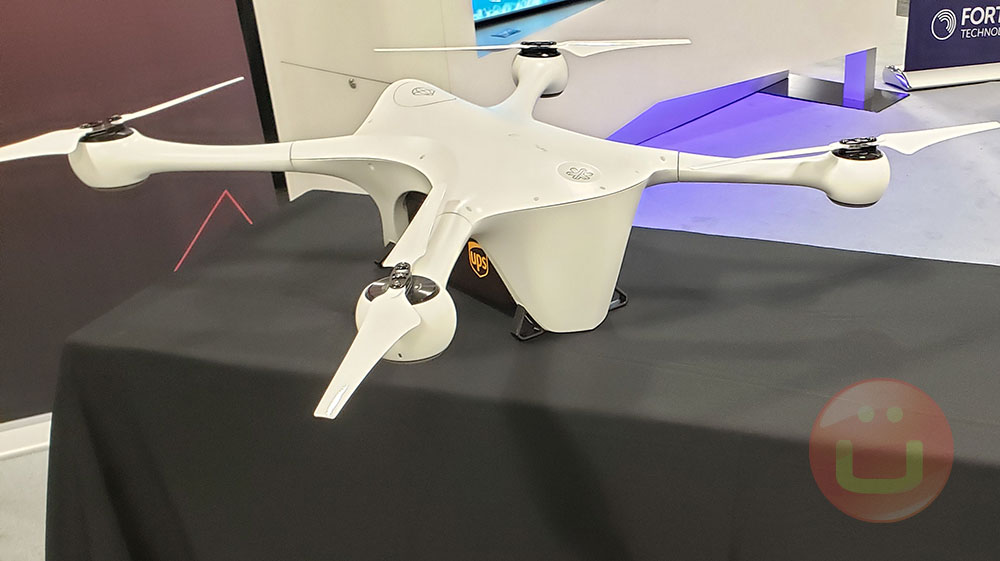Matternet’s Technology Powering First FAA-Approved Drone Airline for UPS

Last Thursday at TC Disrupt 2019, we encountered Matternet, the first drone technology that will deliver UPS packages up to 5 pounds. On October 1st, 2019, UPS subsidiary UPS Flight Forward Inc announced it has received the first full Part 135 Standard certification to operate a drone airline, using Matternet’s drones.
We covered the announcement of Matternet and UPS partnership a few months back, and last week, the U.S. government made the automated flying delivery service a reality.
The UPS healthcare drone service will serve hospitals around the country and is expected to improve the efficiency of medical product delivery. Ultimately, UPS plans to expand the service to a broader range of critical-care and emergency applications.
UPS launched the first drone delivery flight under Part 135 Standard certification right after the U.S. Federal Aviation Administration (FAA) granted it. Matternet M2 quadcopter was flown at WakeMed’s hospital campus in Raleigh, N.C, with a government exemption allowing for “beyond visual line of sight” (BVLOS) operation.
The Matternet M2 drone system combines the Matternet M2 drone and the Matternet Cloud Platform. The automated drone flies at about 40 miles per hour and can carry up to 5 lbs and fly for up to 12.5 miles beyond line of sight and over people.
Two years ago, the company headquartered in Mountain View unveiled the Matternet Station, the third technology component that integrates with the M2 drone and the Matternet Cloud Platform to enable distributed, peer-to-peer logistic networks of drone delivery services.
Using its M2 drones and stations, Matternet operated a healthcare drone delivery service for hospitals across cities in Switzerland, until a recent crash suspended the operations.
The idea is to place a network of stations separated by a distance of about 12.5 miles, the maximum distance the M2 can fly now, where the drones get a fully-automated battery and payload exchange.
The 2 square meters Matternet Station installed at ground level or on a rooftop guide the M2 Drone to landing on the Station’s platform.
Then, the Station locks the drone and automatically swap the batteries and package. The user-friendly interface allows customers to send and receive packages to and from the Matternet Station by scanning a QR code. (See video of the Matternet Station).
We hope that the UPS/ Matternet collaboration will be fruitful in the near future as such a service may be able to save lives when critical medical products are needed fast in high automobile traffic zones.
You May Also Like
Popular Right Now
- First Shutdown of Niagara Falls in 12,000 Years: A Rare Sight to Behold
- Former Google Engineer claims that humans will achieve immortality soon
- Romotow: The Foldable Camping Trailer Inspired By A USB Flash Drive
- LYRA: Swiss Startup Unveils AR Smart Glasses for Office Work, City Life, And Traveling
- Man Caught in China Smuggling $46K Worth of Intel CPUs Wrapped Around His Waist
- iPhone 15 Pro Max may bring thinner bezels than Xiaomi and Samsung’s latest flagships
- OpenAI's new GPT-4 with a "human-level performance" scored up to 93% on SAT exams
- iPhone SE 4 could be Apple's secret weapon to 'steal' budget customers from Samsung
- Lenovo Launches New Workstations, With Aston Martin DNA
- Ubergizmo’s Best of Mobile World Congress 2023
- TCL NXTPAPER 11 Tablet With Paper-like Screen Experience
- Nothing Phone 2 Coming To The U.S. In Late 2023
- Ubergizmo’s Best Of K-Startup @ CES
- Intel Core i9-13900T Shows Extraordinary Efficiency In Early Benchmarks
- Ubergizmo’s Top 3 MIK Products @ CES 2023
- Three LG gram Laptops For 2023. The Lightest Got Even Lighter